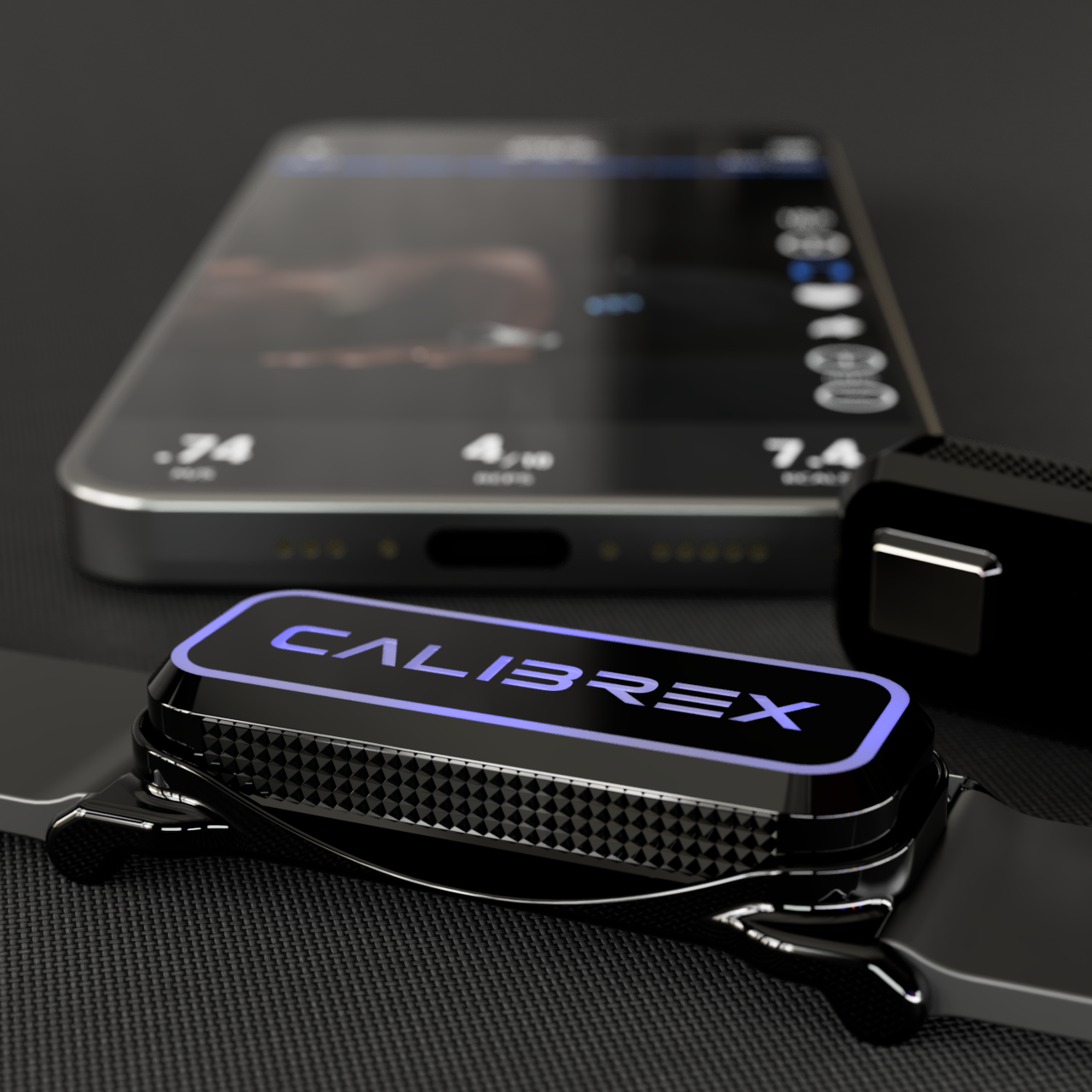Create Your Athletic Profile to Maximize Workouts.
Athletic profiles are the foundation of VBT. Profiles are a collection of your athletic abilities organized into a simple graph. Elite athletes use this all the time to maximize every rep. Now with VBT technology, you can use it too.
Here's an introduction to creating athletic profiles with VBT.
The two most common profiles are:
-
Load Velocity Profile (LV)
-
Load Power Profile (LP)
Load Velocity Profile (LV)
The heavier something is, the slower you're able to lift it. Obvious, right?
Of course it is but imagine this.
You're training to hit a new PR in the back squat. You've been stuck at the same weight for the past few months and can't seem to break through that plateau. But today you’re feeling good. You walk into the gym on a mission.
For the first few ramp-up sets, you have the barbell flying up faster than usual. So, you check your Calibrex app and see that you broke velocity records in your first two sets.
Well, that's interesting.
You weren't planning on maxing out today but there may be a change of plans. By comparing today's results to your LV profile, you see your 1 rep max (1RM) prediction is higher than ever before.
Now, adjust your workout to build up to a 1RM and break through that plateau!
With an LV profile, you can take advantage of your good days by knowing exactly what you're capable of.
Here's how:
The fastest speed you can lift a weight is very easy to calculate once you have a few examples. In fact, they have a linear relationship, so all you need is four trials to get a predictable trend.
Check this out.
This graph predicts the fastest speed you can lift any weight.
For example:
-
At 100kg this person can move the barbell just above 0.6m/s
-
At 40kg they can move the barbell around 1.2m/s
Before we use this graph there is something you need to know.
For any lift, you must reach a minimum speed to complete the movement. This is called the minimal velocity threshold (MVT).
Use the MVT and your LV profile to find your predicted 1-RM.
In this lifter's case, their predicted 1-RM for back squats is 140kg.
Load Power Profile (LP)
You want more power, huh?
Good. Here's a simple way to train for explosive power.
The most common way to use an LP profile is to find out two things.
-
Peak power output
-
Weight where max power is produced
This graph shows your peak power output. In this case, it is about 550W.
Now you know you can use this graph to find and track your peak power output, but how do you train to improve it?
Here's where the magic happens:
-
Find the highest point on your graph
-
Draw a line straight down
See where your line ended up? That's the weight you should lift to train peak power output.
-
Power is about intention.
-
Make sure each rep is done with maximum effort.
How do I Use My Profile?
The more you understand the information within your load velocity profile, the better you can tailor your training to address the factors limiting your success.
I recommend starting to track one metric for one exercise.
Keep it simple and choose one goal.
Here are some exercises:
-
Bench Press
-
Squat
-
Deadlift
-
Overhead Press
Here are two metrics:
Readiness
-
Predict your max strength daily without lifting it!
-
Early in your workout, compare your best rep velocity to your profile to see if your body is fresh or fatigued.
-
If your best rep velocity is <10% lower today, then you may need to take it easy and prioritize recovery.
Peak Power
-
Power is the speed you move a weight from point A to B.
-
VBT helps you find the weight where you produce the most power.
-
Lift this weight with max effort and track your progress.
Pick one of each and try out different strategies to reach new personal records!
Looking to maximize your workouts?
-
Check out our free logbook that'll help you create an athletic profile without the hassle.








Share:
Why track workout data?
How to Use Velocity Cutoffs